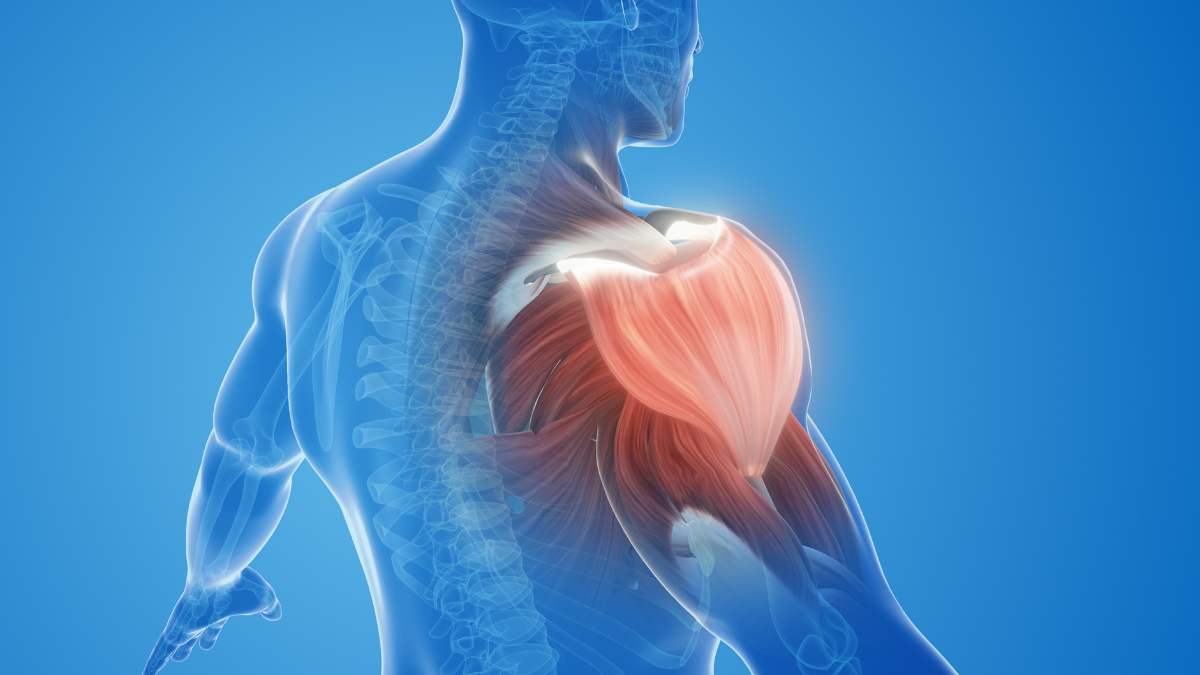Picture reaching for your morning coffee, only to be stopped by a searing pain in your shoulder. Or trying to put on a jacket, but finding your arm won’t move the way it should. For John, a Los Angeles resident, this wasn’t just imagination – it was his daily reality while dealing with frozen shoulder syndrome. According to UCSF, statistics suggest that 5 percent to 20 percent of the population will experience an episode of frozen shoulder in their lifetime, making this condition more common than many realize. This is the story of how dedicated chiropractic care transformed Tom’s life and restored his mobility, offering hope to others facing similar challenges.
Key Takeaways
- Complete immobility to 80% shoulder function in 6 months through consistent chiropractic care, proving that frozen shoulder isn’t a permanent sentence – there’s hope for recovery without surgery.
- Successful treatment requires a comprehensive approach combining manual soft tissue work, chiropractic adjustments, and progressive rehabilitation, rather than just focusing on the shoulder joint alone.
- Early intervention is crucial – John’s story emphasizes that seeking professional help when first noticing shoulder stiffness or pain can prevent the condition from progressing and potentially speed up recovery time.
Experience the BodyFix Difference
Experience the difference that patient-centric, whole-body chiropractic care can make. Discover how The BodyFix’s unique approach addresses not just your pain, but your overall wellness for lasting results.
Understanding Frozen Shoulder: More Than Just Stiffness
Frozen shoulder, medically known as adhesive capsulitis, is a condition that affects roughly 2-5% of the population (but as high as 20% for people with diabetes).1 It occurs when the strong connective tissue surrounding the shoulder joint (the capsule) becomes inflamed and tight, restricting movement and causing significant pain. Think of the shoulder capsule as a flexible sleeve that allows your shoulder joint to move smoothly and freely. When someone develops a frozen shoulder, this sleeve becomes inflamed, thickens, and develops scar tissue – much like a piece of shrink wrap gradually tightening around the joint.
The Three Stages of Frozen Shoulder
The condition typically progresses through three distinct stages, each with its own characteristics. During the initial freezing stage, which can last anywhere from six to nine months, patients experience a gradual onset of pain and progressive loss of motion. The pain tends to be worse at night, and daily activities become increasingly difficult as the condition progresses.2
As the condition moves into the frozen stage, lasting four to six months, many patients find that while their pain may improve somewhat, the stiffness increases significantly. The shoulder feels literally “stuck,” and the range of motion becomes severely limited. Finally, during the thawing stage, which can last anywhere from six months to two years, patients begin to see gradual improvement in their range of motion as pain continues to decrease.3
The Path to Recovery: A Six-Month Transformation
When John first came in for his initial assessment, it was clear that we were dealing with a classic case of frozen shoulder. The evaluation revealed not just a severely restricted range of motion, but also significant pain with any attempted movement. We noticed he had developed compensatory movements of the shoulder blade, and his muscles were constantly guarding against pain. These signs told us we needed a comprehensive, patient approach to his treatment.
Our treatment strategy for John needed to be both thorough and adaptable. We began with gentle manual soft tissue work, gradually working to release the tension that had built up over months. This included careful manipulation of the tissues around the shoulder joint, combined with precise chiropractic adjustments designed to improve overall shoulder mechanics. Each session built upon the progress of the last, always respecting Johns pain levels and tissue response.
Breaking Through: Milestones in Tom’s Recovery
The first four weeks laid the crucial foundation for John’s recovery. We focused primarily on pain management and extremely gentle mobility work. Trust was essential during this phase – John needed to understand that while progress might seem slow, each small improvement was building toward his ultimate recovery. We established a careful home care routine that complemented his in-clinic treatments.
As we moved into weeks five through twelve, we began seeing more significant improvements. John’s range of motion started to increase more notably, and his pain levels began to decrease. This allowed us to introduce more challenging exercises, and perhaps most importantly, John started sleeping better at night. The combination of improved sleep and decreased pain had a snowball effect, accelerating his overall recovery.
The final phase of John’s treatment, from week thirteen through twenty-four, showed the most dramatic improvements. His pain levels dropped significantly, and his mobility returned to about 80% of normal. What was most rewarding was watching him return to daily activities that had been impossible just months before. Each small victory – whether it was being able to reach for something on a high shelf or put on a jacket without assistance – brought visible joy to John’s face.

The Emotional Impact: More Than Physical Healing
The moment John realized he had regained 80% of his shoulder mobility, it was overwhelming for both him and our team. His emotional response – tears of joy and the heartfelt gift of a whiskey bottle – spoke volumes about the impact of his recovery. This wasn’t just about moving an arm; it was about regaining independence and quality of life. As practitioners, these are the moments that remind us why we chose this field – the ability to truly transform someone’s daily experience of life.
Understanding Why Chiropractic Care Works for Frozen Shoulders
The success of chiropractic care in treating frozen shoulders lies in its comprehensive approach. Rather than focusing solely on the shoulder joint itself, treatment addresses the entire kinetic chain, including the spine, shoulder blade, and surrounding tissues. This holistic approach allows us to not only treat the immediate symptoms but also address any underlying biomechanical issues that might have contributed to the condition.
Our progressive treatment methodology respects the body’s natural healing processes while gently pushing the boundaries of what’s possible. By combining hands-on manipulation with therapeutic exercises and movement patterns, we create an environment where the body can heal while gradually regaining its normal range of motion.

Hope and Prevention: Lessons from Tom’s Success
From John’s experience, we’ve learned that early intervention is crucial in treating a frozen shoulder. The condition often begins subtly – a slight stiffness in the morning, a bit of difficulty reaching behind your back, or mild pain when raising your arm. These early warning signs shouldn’t be ignored, as addressing the condition in its early stages can significantly reduce recovery time.
For those between 40 and 60 years old, particularly women or individuals with diabetes, being aware of these early symptoms is especially important. Previous shoulder trauma or periods of prolonged immobility can also increase your risk of developing a frozen shoulder.
Experience the BodyFix Difference
Experience the difference that patient-centric, whole-body chiropractic care can make. Discover how The BodyFix’s unique approach addresses not just your pain, but your overall wellness for lasting results.
FAQs
What are the common causes of frozen shoulder?
How can a chiropractor diagnose a frozen shoulder?
What are the typical symptoms of a frozen shoulder?
What is the best-frozen shoulder treatment?
What shoulder exercises can help with a frozen shoulder?
Conclusion
What made John’s recovery particularly meaningful was his dedication to the process. Despite the initial frustration and slow progress, he maintained his commitment to treatment and followed through with his home care program. His success story serves as an inspiration and reminder that while a frozen shoulder can be a challenging condition, proper treatment can lead to significant improvement.
If you’re experiencing shoulder stiffness or pain, don’t wait until simple movements become impossible. John’s journey from complete immobility to 80% improvement shows us that with proper care and dedication, remarkable results are possible. Early intervention can prevent the progression of a frozen shoulder and speed up recovery time.
Every person’s journey with a frozen shoulder is unique, but the principles of recovery remain consistent: proper diagnosis, dedicated treatment, and patient persistence. Whether you’re just beginning to notice shoulder stiffness or are already experiencing significant limitations, there’s hope for improvement. Take the first step toward shoulder health by scheduling a comprehensive evaluation. Let John’s success story be your inspiration for taking action today.
Remember, it’s not just about treating a condition – it’s about restoring your ability to live life fully and freely, just as John can now. His journey from complete immobility to joyful tears of success reminds us that with the right care and commitment, significant recovery is possible.
During your consultation, we’ll take the time to thoroughly understand your condition, evaluate your range of motion, and discuss your specific goals. Together, we’ll develop a treatment plan tailored to your needs, just as we did with John. Remember, the sooner you address your shoulder pain, the better your chances for a swift and complete recovery.
Don’t wait until simple tasks become impossible. Take the first step toward reclaiming your mobility and living pain-free. Book your consultation with me today!
- https://pmc.ncbi.nlm.nih.gov/articles/PMC5384535/#:~:text=The%20incidence%20of%20adhesive%20capsulitis,%25%20to%2050%25%20of%20cases. ↩︎
- https://www.ncbi.nlm.nih.gov/books/NBK532955/ ↩︎
- https://www.ncbi.nlm.nih.gov/books/NBK482162/ ↩︎
- https://www.hopkinsmedicine.org/health/conditions-and-diseases/frozen-shoulder#:~:text=A%20frozen%20shoulder%20is%20one,out%20other%20causes%20of%20symptoms. ↩︎
- https://pmc.ncbi.nlm.nih.gov/articles/PMC3706702/ ↩︎
Blog Disclaimer: The information provided on The BodyFix Chiro blog is for general informational and educational purposes only and is not intended as medical advice. These articles reflect our opinions and experiences but should not be used to diagnose or treat any health conditions. Always consult with your physician, chiropractor, or other qualified healthcare provider before starting any new treatment, exercise program, or making changes to your health routine. Any actions you take based on information from this blog are entirely at your own risk, and The BodyFix Chiro and its contributors disclaim any liability for the decisions you make based on this information.




